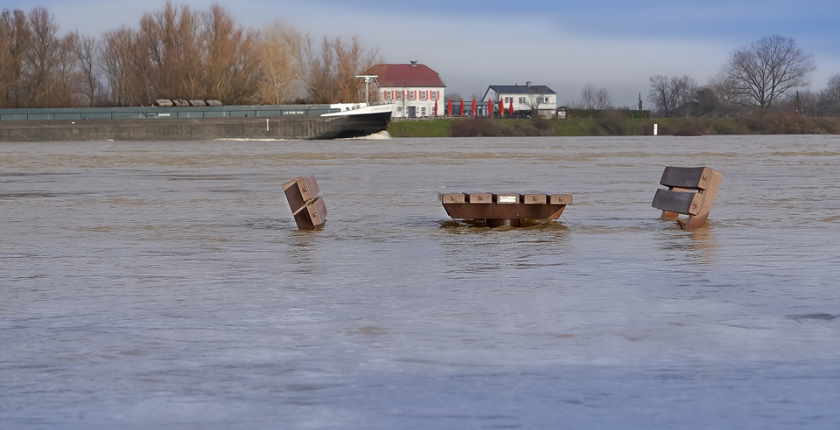
Photo: Foto-Rabe from Pixabay
The European Commission has adopted a new EU Strategy on Adaptation to Climate Change to prepare for the unavoidable impacts of climate change.
Economic losses from more frequent climate-related extreme events now average over EUR 12 billion per year while conservative, lower bound estimates show that exposing today’s EU economy to global warming of 3°C above pre-industrial levels would result in an annual loss of at least EUR 170 billion, reads the EU strategy.
The economic losses caused by weather in 1980–2016 amounted to over EUR 436 billion
The total reported economic losses caused by weather and other climate-related extremes in Europe in 1980–2016 amounted to over EUR 436 billion, the EU report shows.
These losses are one of the main reasons why the EU needs a new EU strategy, according to the European Commission.
“From deadly heatwaves and devastating droughts, to decimated forests and coastlines eroded by rising sea levels, climate change is already taking its toll in Europe and worldwide. Building on the 2013 Climate Change Adaptation Strategy, the aim of today’s proposals is to shift the focus from understanding the problem to developing solutions, and to move from planning to implementation,” the commission said.
Drought losses could rise from EUR 9 billion to EUR 40 billion
Due to the changing climate, many European regions are already facing more frequent, severe, and longer-lasting droughts.
In Europe, most of the losses caused by drought (about EUR 9 billion/year) affect agriculture, the energy sector and the public water supply.
In 2018 alone, agricultural damages amounted to some EUR 2 billion in France, EUR 1.4 billion in the Netherlands, and EUR 770 million in Germany. With global warming at 3°C, droughts would happen twice as often and the absolute annual drought losses in Europe would increase to EUR 40 billion/year, with the most severe impacts in the Mediterranean and Atlantic Regions, reads the EU strategy.
Annual damage to Europe’s critical infrastructure could increase ten-fold by the end of the century
The EU data show that due to climate change alone, annual damage to Europe’s critical infrastructure could increase ten-fold by the end of the century under business-as-usual scenarios (from the current EUR 3.4 billion to EUR 34 billion). Losses would be highest for the industry, transport and energy sectors.
Three objectives of EU Strategy
The strategy has three objectives and proposes a range of actions accomplish them:
- To make adaptation smarter – improving knowledge and availability of data, while managing the inherent uncertainty brought upon us by climate change; securing more and better data on climate-related risk and losses, and making Climate-ADAPT the authoritative European platform for adaptation knowledge.
- To make adaptation more systemic – supporting policy development at all levels of governance, society and the economy and in all sectors by improving adaptation strategies and plans; integrating climate resilience in macro-fiscal policy, and promoting nature-based solutions for adaptation.
- To speed up adaptation across the board – by accelerating the development and rollout of adaptation solutions; reducing climate-related risk; closing the climate protection gap, and ensuring the availability and sustainability of fresh water.
European Committee of the Regions: The strategy lacks targets
Even though the new EU Strategy on Adaptation to Climate Change enables the move from planning to action it still lacks concrete climate adaptation targets, according to the European Committee of the Regions (CoR).
CoR said that the COVID-19 pandemic has only exacerbated the need to build a healthier and safer environment for all.
“We are pleased to see that the European Commission has adopted a more ambitious EU Adaptation Strategy in line with our call to foster active subsidiarity and proportionality, recognizing the crucial role that cities and regions play in climate adaptation. We now need to move the action forward and substantially increase financing tools for local climate adaptation projects, scale up the replication of best practices Europe-wide and exploit the opportunities for innovation provided by data-based policymaking,” Markku Markkula, Chair of Espoo City Board and President of the Helsinki Region, said.









Be the first one to comment on this article.